One of the primary motivations of my Latin America trip was to see the world-famous Iguazu Falls, which span a series of meanders of the Iguazu River along the Brazil–Argentina border.
The falls themselves are mostly concentrated on the Argentine side of the river. As a result, a visit to the falls on the Brazil side affords a commanding view of the falls from a distance, while a visit to the Argentina side gives you the opportunity to get up close and personal and truly absorb the splendour of the falls.
We therefore planned a stay of two days and three nights in the nearby Brazilian city of Foz do Iguaçu, with the intention of checking out the views from both the Brazil and Argentina sides.
The two countries have both designated the area surrounding the falls as national parks, with guided trails and facilities to ensure a smooth experience for visitors. The parks are known as Iguaçu National Park in Brazil and Iguazú National Park in Argentina, the only difference being their respective usage of the Portuguese and Spanish spelling of the river’s name. To keep things simple, I’ll use the English spelling when not referring to either side in particular, which is simply “Iguazu”.
The Brazil Side
The trip out to Iguaçu National Park on the first day was relatively easy, since the city of Foz do Iguaçu is only a 20-minute bus ride away. Bus number 120 brings you to the doorstep of the national park, where you purchase your park tickets. Admission is R$62 (~$21), and credit cards are accepted.
The park entrance is still located quite some ways up from the riverbank, so after you scan your ticket and enter the park, you hop on an open-air bus that brings you along the 10km journey down to the falls themselves. There are also hiking trails available if you’re interested in walking the journey. Jessica and I decided to take the bus on the way down and try hiking back up later.
The bus drops you off in front of the Belmond Hotel, which is the only hotel on park grounds. I’d definitely try to stay here on my next visit, since it looks like an absolutely gorgeous property.
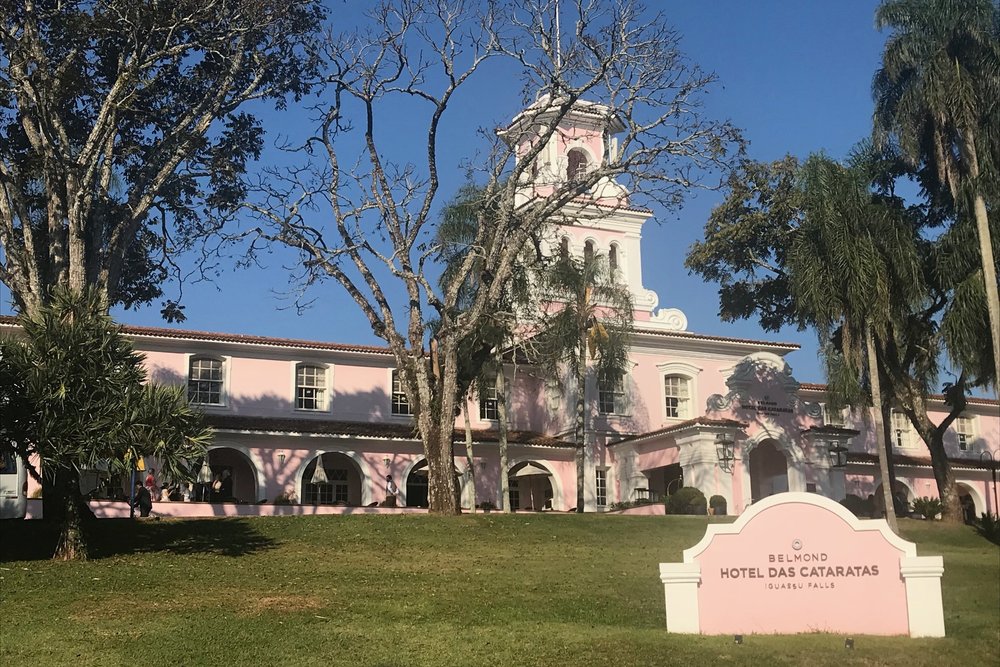
Iguazu Falls – Belmond Hotel das Cataratas
It’s also here that you’ll most likely run into a South American coati – these small, raccoon-like creatures are all over the place around here! They try to snatch any food you’re holding in your hand, make incredibly high-pitched noises when they’re agitated, and generally act like nuisances. Simply ignore them and they’ll be harmless – definitely don’t try to feed them, since they’re known to “bite the hand that feeds”!
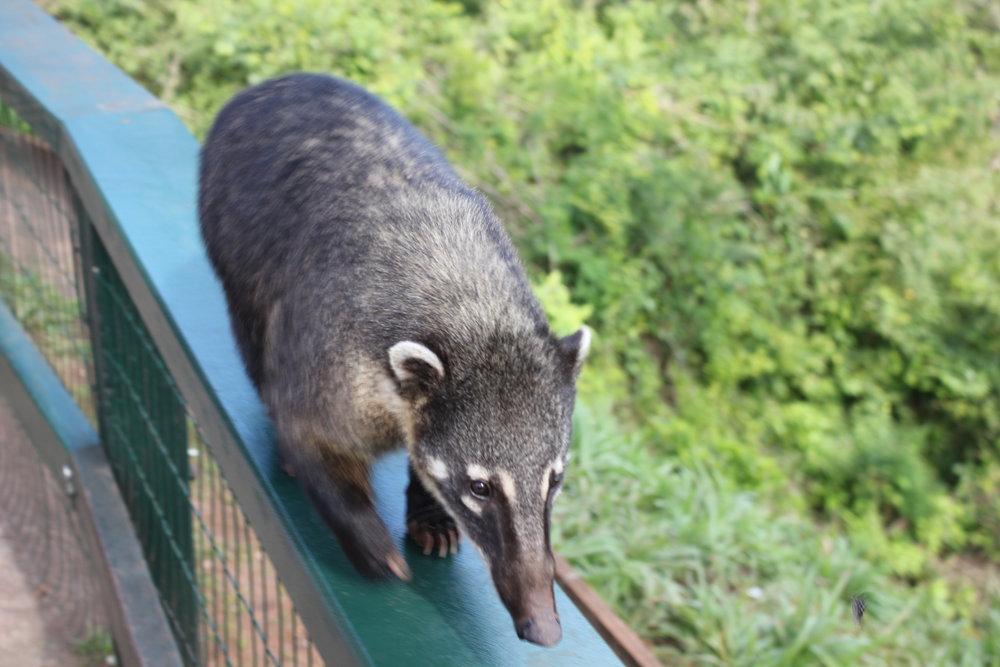
Iguazu Falls – South American coati
The first viewing deck is only a few steps away. This point represents the beginning of the sightseeing trail, and you get your first glimpse of the majestic Iguazu Falls. It’s hard to describe the feeling when the furious columns of water first emerge into view. Breathtaking doesn’t begin to describe it.
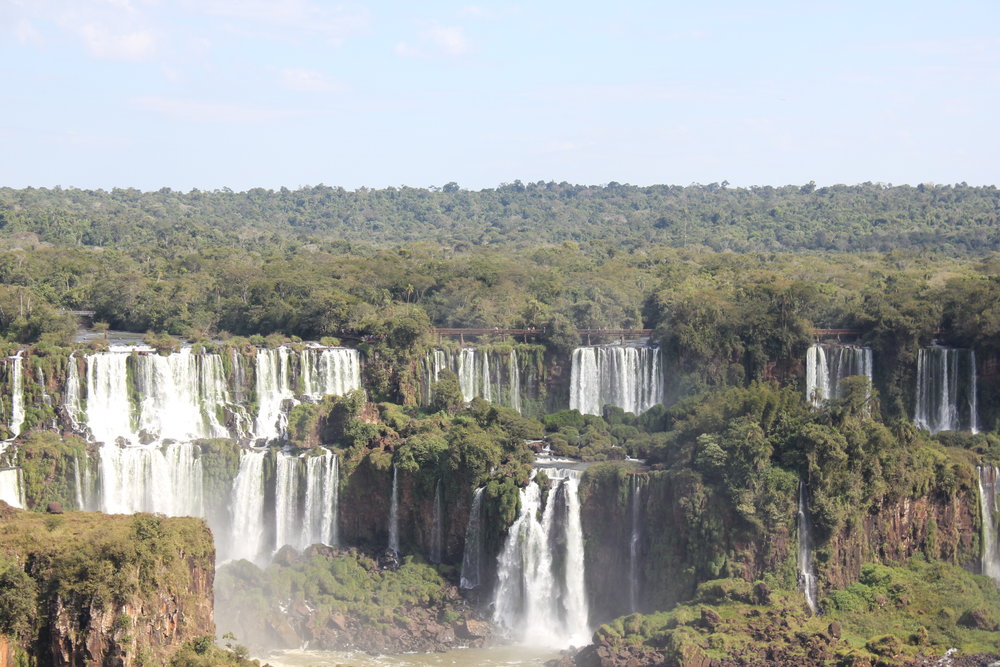
Iguazu Falls – View from the Brazil side
Unlike our very own Niagara Falls – where the Niagara River drains into Lake Ontario over a chasm that’s more or less smooth and horseshoe-shaped all the way across, thus creating the appearance of a single curved sheet of water – Iguazu Falls is created by hundreds of columnar basalt rock sequences that cut across the Iguazu River in a jagged, winding fashion, dividing the river into the Upper Iguazu and the Lower Iguazu. The result is a spectacular waterfall network that comprises over 200 individual falls spread across a few kilometres of riverbank, making it the largest waterfall network in the world.
This also means that when you’re visiting the national parks, the first glimpse of the falls is nothing more than a teaser, since the best is very much yet to come.
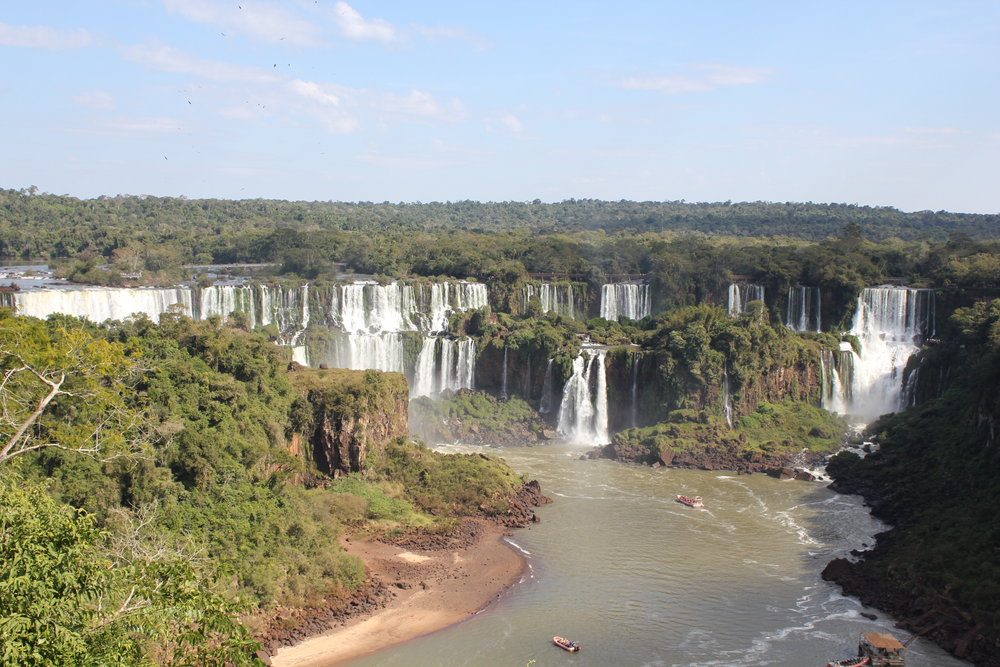
Iguazu Falls – View from the Brazil side
From the first viewing point, the sightseeing trail takes you to several more lookouts of the individual falls on the opposite side, before it leads you down to the banks of the roaring Lower Iguazu. Along the way, keep your eyes out for the tremendous fauna in this part of the world. There are quite a few distinctive birds to be spotted up in the trees if you look closely, although it’s hard to miss the dozens of colourful butterflies that are eager to befriend you.
Eventually, the sightseeing trails transforms into a catwalk extending into the river itself, allowing you a close-up view of the frothing waters and culminating in a viewing platform of the crown jewel of the Iguazu Falls – the Devil’s Throat.
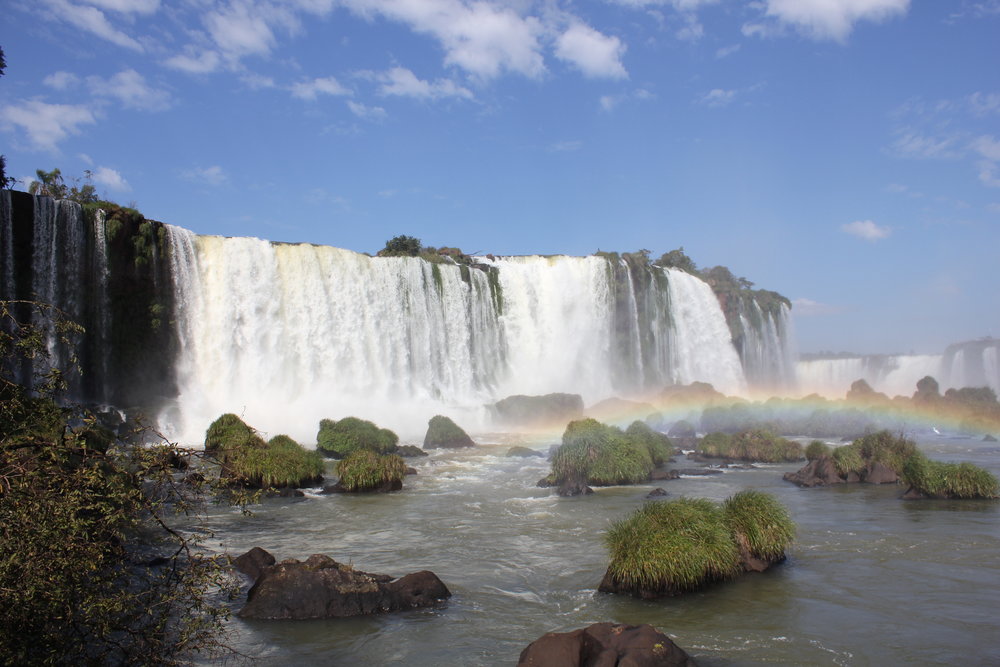
Iguazu Falls – View from the Brazil side
The Devil’s Throat is a long, narrow chasm with a particularly furious flow rate. About half of the Upper Iguazu empties down this 100m-wide gap. Unlike the other individual falls in the network, many of which cascade down the basalt rock sequences in a staircase pattern, the falls of the Devil’s Throat come straight down all the way, resulting in a particularly potent mist cloud that batters the viewing platform. Get your ponchos and raincoats out, and put your cameras away if you can help it!
Eleanor Roosevelt is said to have uttered “My poor Niagara!” upon visiting Iguazu. It’s not hard to see why.
The viewing platform to the Devil’s Throat also marks the end of the sightseeing trail. There’s a visitors centre around here that provides some pretty epic views of the falls nearest to Brazil, and you can also grab some lunch and snacks. The coatis are especially pesky around here, and you’ll likely see packs of them roaming around looking for food-carrying humans to terrorize. Keep your stuff close!
You can finish sightseeing on the Brazilian side in just about a few hours’ time, although we spent some extra time just leaning against the rails and watching the water do its thing. I find waterfalls to be by far the most captivating natural phenomenon out there, and I could probably watch them in action for hours on end.
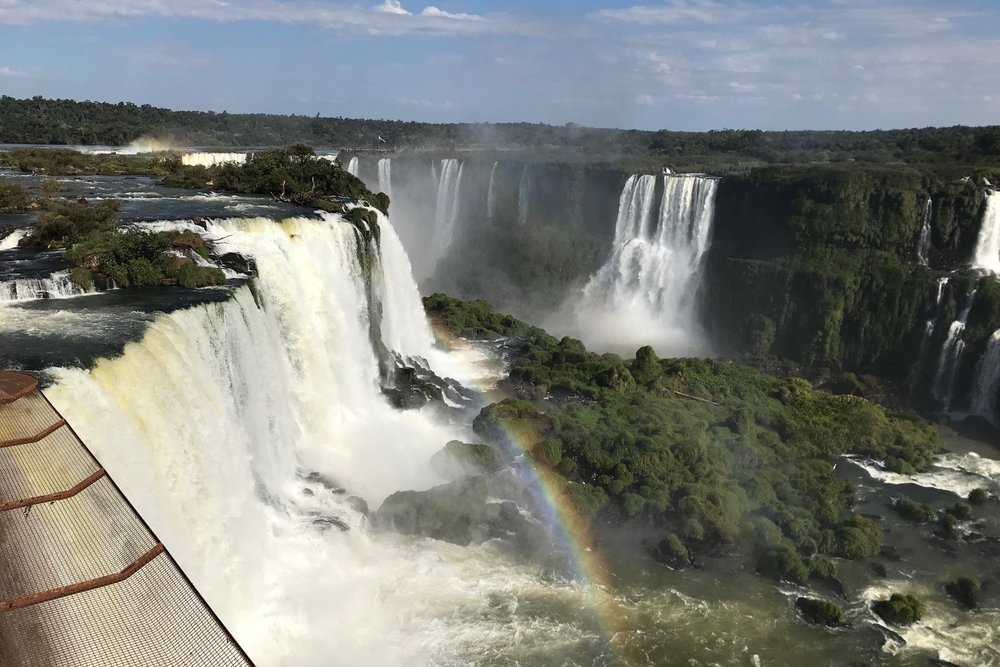
Iguazu Falls – View from the Brazil side
It simply amazes me to watch entire rivers simply drop away, their contents flowing endlessly into the abyss. It blows my mind even further to know that the water has tumbled like this for centuries before me, and will tumble for centuries after. It flows during the day when thousands of people are here to watch it, and during the night when no one is around. It’s simply nonstop action.
Jessica eventually managed to pull me away, reminding me that we had another day of waterfall-chasing lying ahead tomorrow. We attempted to get some exercise and walk the 10km trail back to the park entrance, but eventually got tired and caught the bus at around the 5km mark. A quick stop at the gift shop later and we were on the bus back to Foz do Iguaçu to grab some dinner and rest up before heading over to the Argentina side the next day.
The Argentina Side
If you’re based in Foz do Iguaçu for your visit to the falls, getting to the Argentina side requires a fair bit of work. First, you’ll have to catch a bus from Foz do Iguaçu to Puerto Iguazú, the closest Argentine city to the border and the gateway to the Argentine national park. Catching this bus may well be a matter of luck, since we couldn’t find a bus schedule anywhere. I’d advise heading out early to the Foz do Iguaçu bus station and waiting by the white building closest to the zoo – you’ll see the words “Puerto Iguazu” on the front of the bus when it arrives.
The bus brings you to the border checkpoint between the two countries. Our bus driver did his best to communicate to travellers that if you’re going to Argentina and coming back the same day, then you don’t need Brazil exit and entry stamps, but you do need Argentina entry and exit stamps. Okay then.
Indeed, the bus drops you off at an Argentina immigration building, where you’ll get your Argentina entry stamp (between this side-trip and my earlier side-trip from Buenos Aires to Uruguay, my passport would indicate that I really like going to Argentina!)
The bus then picks up everyone after they’re done clearing immigration and brings you to Puerto Iguazú, but it won’t actually bring you to Iguazú National Park! To get to the falls themselves, you’ll need to catch another bus. To be honest, this part of the journey got really confusing, since nothing was signposted anywhere. A lot of waiting around, nodding among fellow travellers, and communicating with bus drivers in broken Spanish was required to eventually get us to the doorstep of Iguazú National Park. The good news is that both buses are relatively cheap and can be paid in both Argentine pesos and Brazilian reais.
Admission to Argentina’s side of the falls is AR$600 (~$29), where there are a lot more sightseeing possibilities for visitors. Instead of just a single trail, there’s an Upper Trail, a Lower Trail, and a scenic railway that brings you face-to-face with the Devil’s Throat. We decided to save the best for last and complete the two trails before hopping on the scenic train.
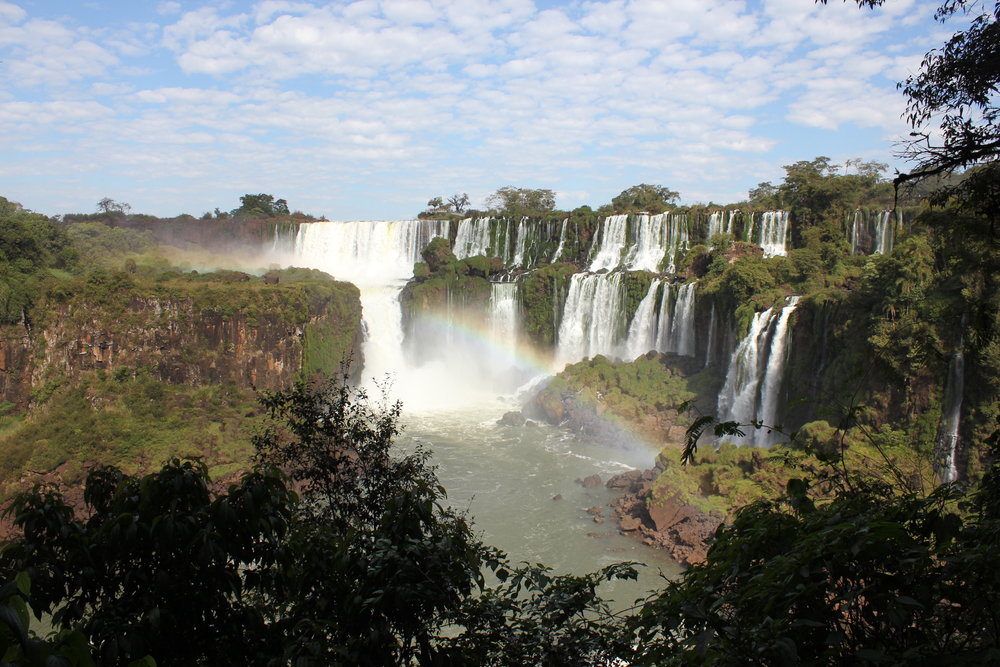
Iguazu Falls – View from the Argentina side
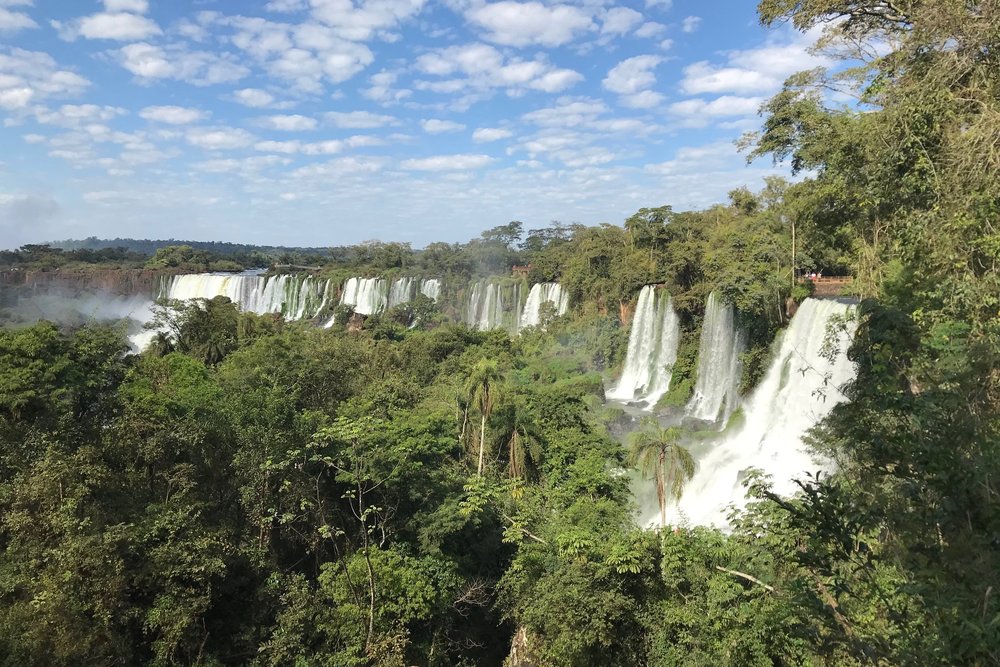
Iguazu Falls – View from the Argentina side
The Upper and Lower Trails both consist of a series of catwalks that stretch out over the various branches of the Upper Iguazu River. They allow you to intimately observe the individual pools, streams, and mini-falls that eventually morph into the vast Iguazu Falls themselves.
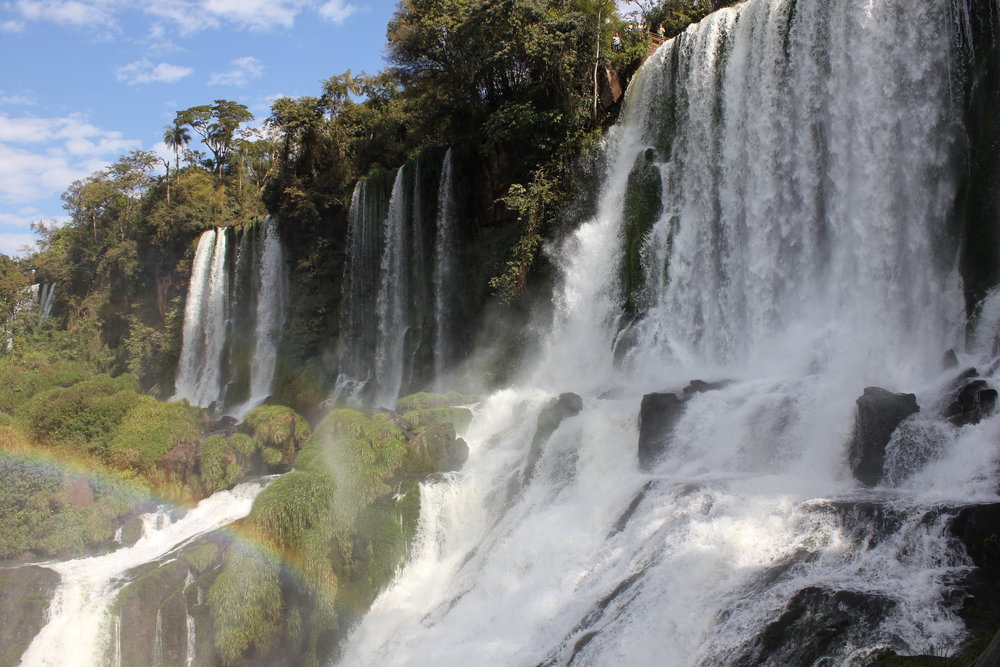
Iguazu Falls – View from the Argentina side
As a waterfall enthusiast, I must say I find these fast-flowing headwaters to be just as captivating as the main spectacle.
After a few hours on the trails, it was time for a quick lunch before hopping on the scenic railway. Unfortunately, the South American coatis are even more relentless on this side, and they seem to have joined forces with the monkeys of the forest to harass visitors. We witnessed a burrito-toting lady jump out of her seat, having been startled by a pack of coatis, only to have her burrito snatched out of her hand by a monkey who had climbed up a nearby pole!
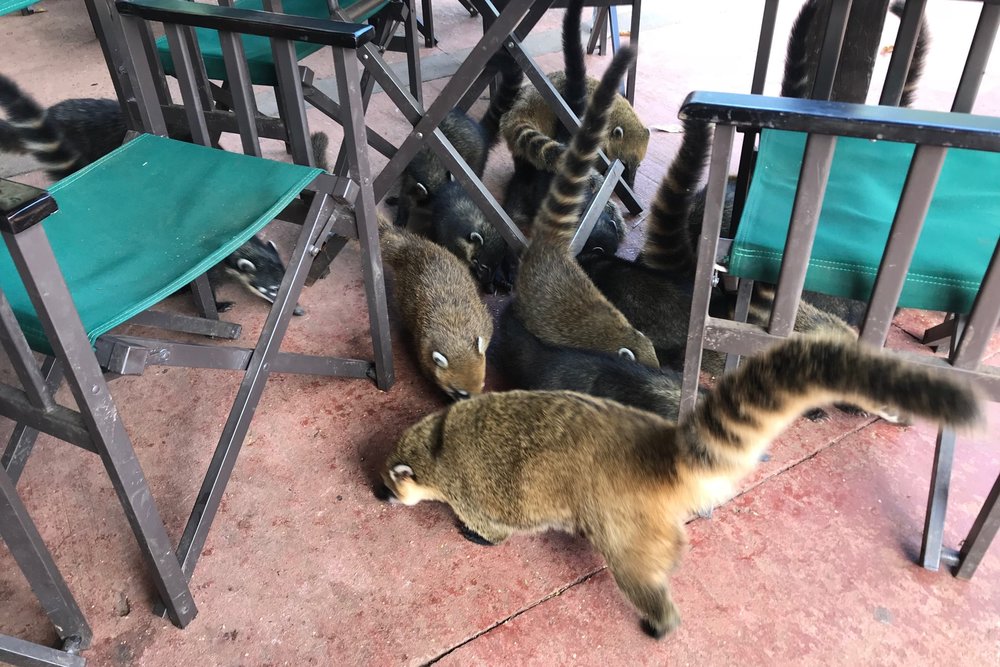
Iguazu Falls – Coatis wreaking havoc
The railway takes you on a 10-minute journey around the eastern banks of the Upper Iguazu, after which you follow a series of catwalks into the very centre of the Devil’s Throat. Whereas the viewing deck on the Brazil side had given you a view of the Devil’s Throat as it crashes into the Lower Iguazu, the Argentina side gives you an incredible view of the action as the waterfalls begin their descent.
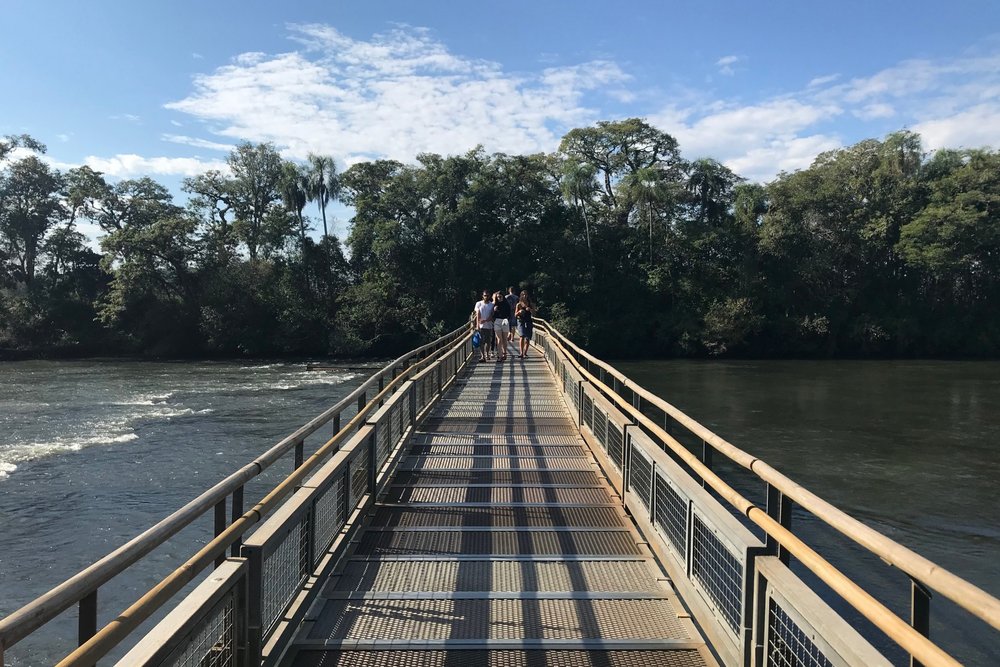
Iguazu Falls – Catwalk to the Devil’s Throat viewing platform
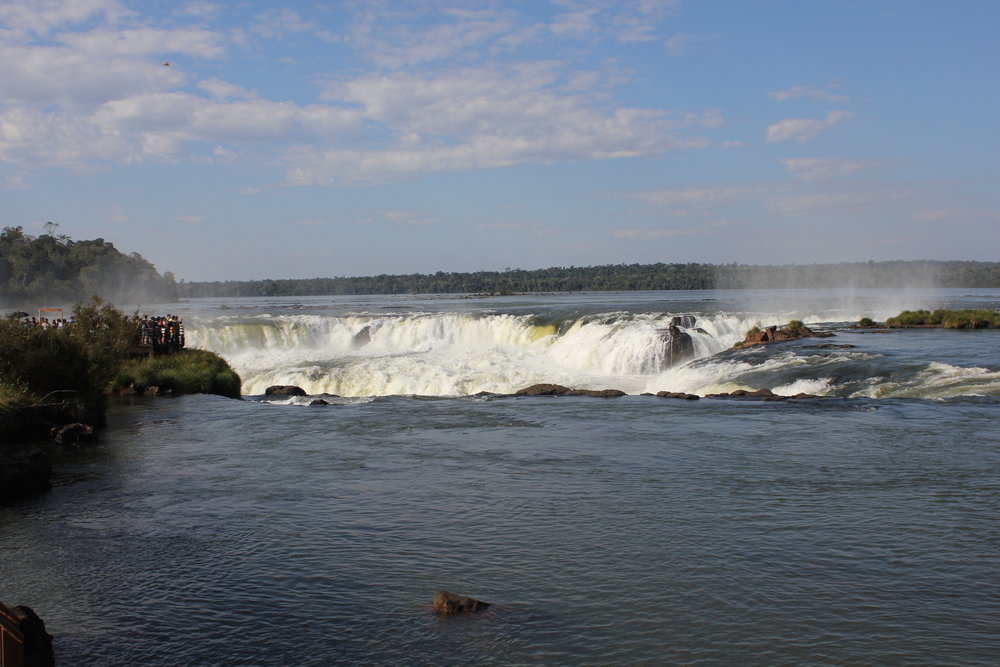
Iguazu Falls – Approach to the Devil’s Throat
Naturally, the magic is in the movement of thousands of cubic metres of water per second, and so the pictures don’t quite do it justice.
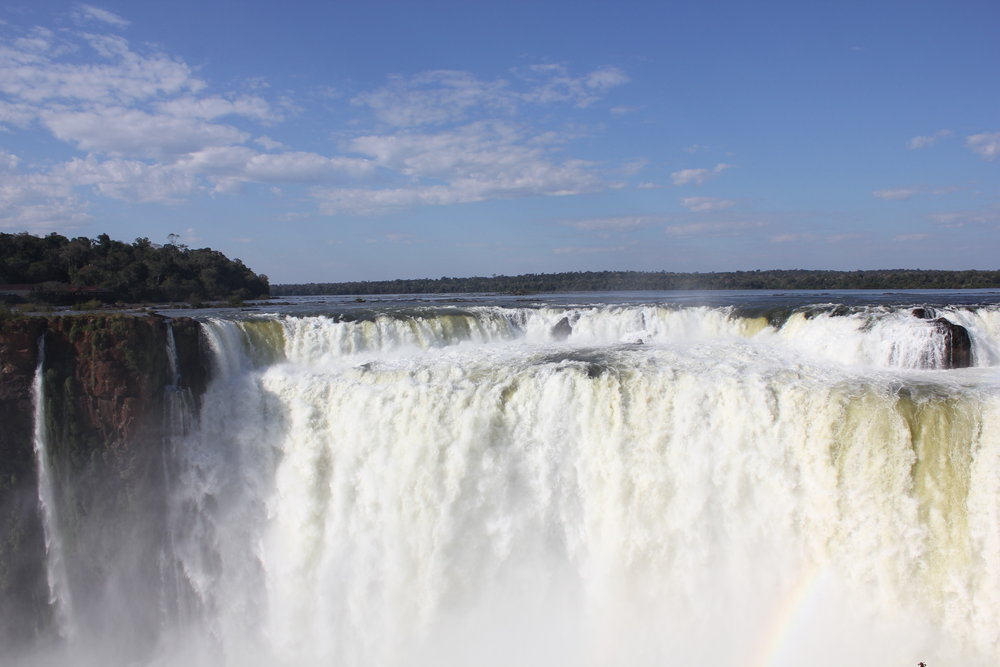
Iguazu Falls – View of the Devil’s Throat
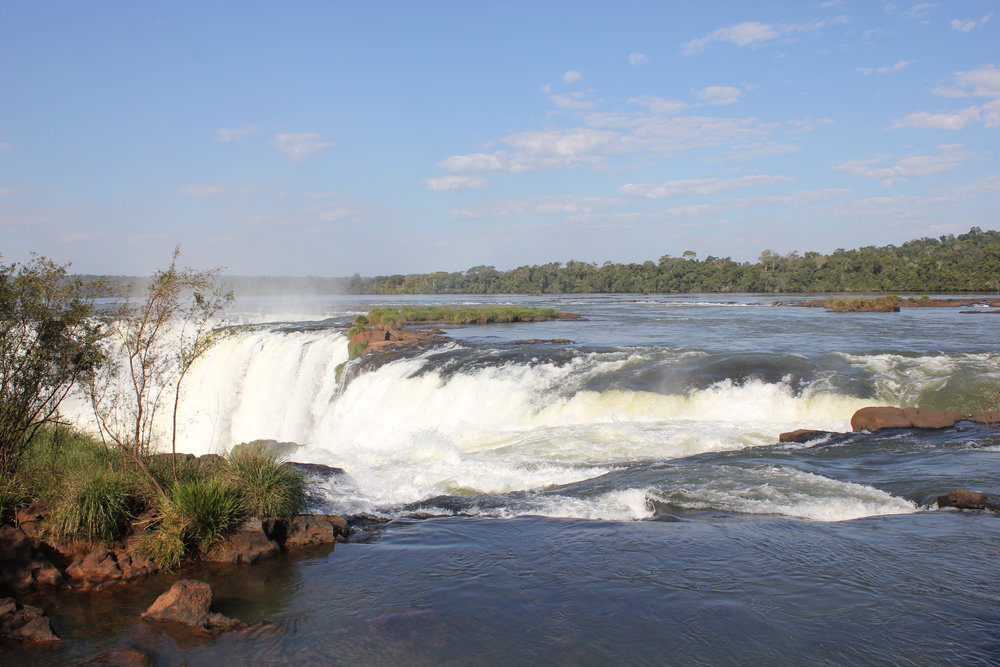
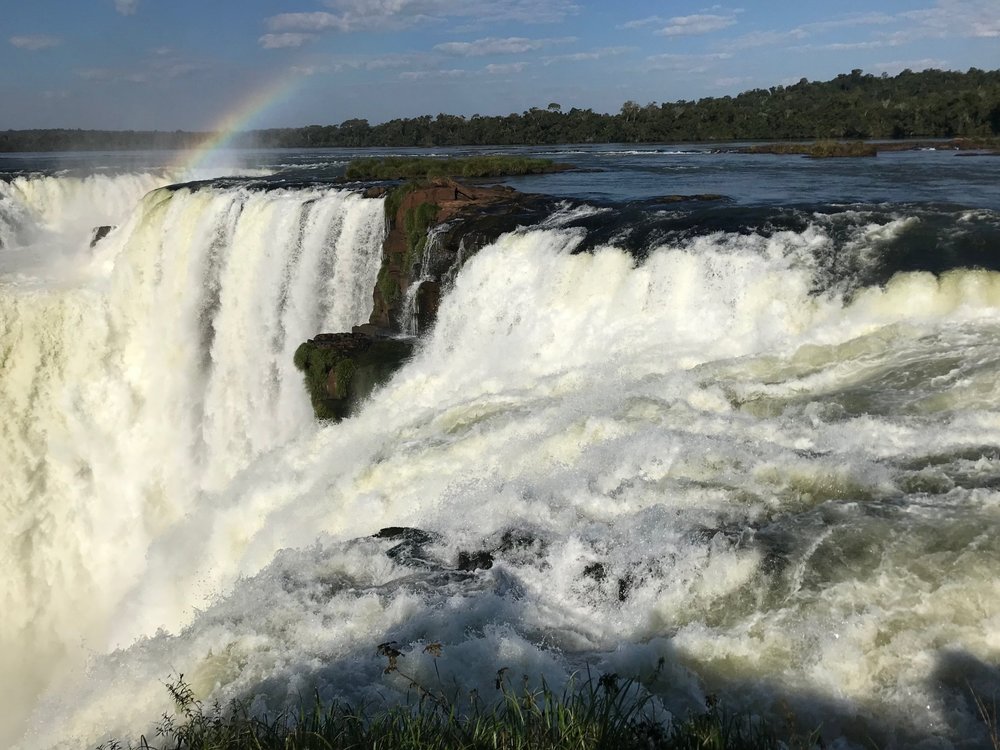
I stood at the corner of the platform, transfixed by the panoramic curtain of water around me for what seemed like an eternity, before once again Jessica had to drag me away. “They’ll still be here next time,” she reassured me, and I took comfort in the knowledge that she was right.
Conclusion
I was so excited to witness the majestic Iguazu Falls with my own eyes, and they did not disappoint in the slightest. The next time I’m travelling in the region and have a few spare days, I’d go back in a heartbeat to stand within the mists of the Devil’s Throat and recapture the beauty of the endless moving water. If you’re planning a visit, make sure you hit up the national parks in both Brazil and Argentina to enjoy the full experience – the sweeping vistas in the former and the rendezvous with the onrushing waters in the latter.
After Niagara and Iguazu, next up on my list are the Victoria Falls in Zambia and Zimbabwe (the largest sheet of falling water), the Khone Phapheng Falls in Laos and Cambodia (the widest in the world), and the Angel Falls in Venezuela (the tallest in the world). The waterfall-chasing subplot continues…


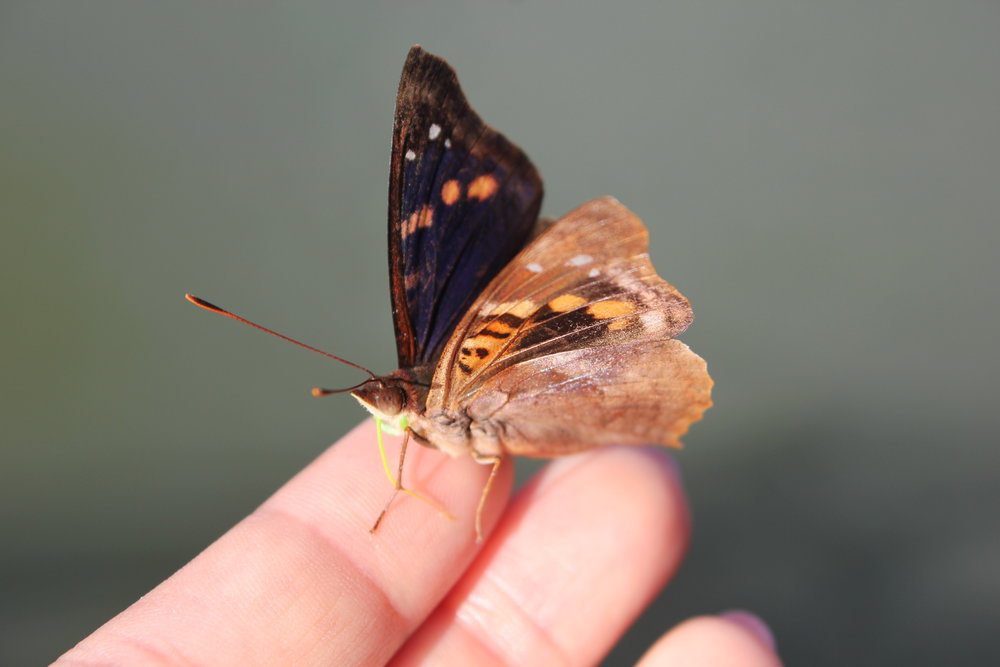
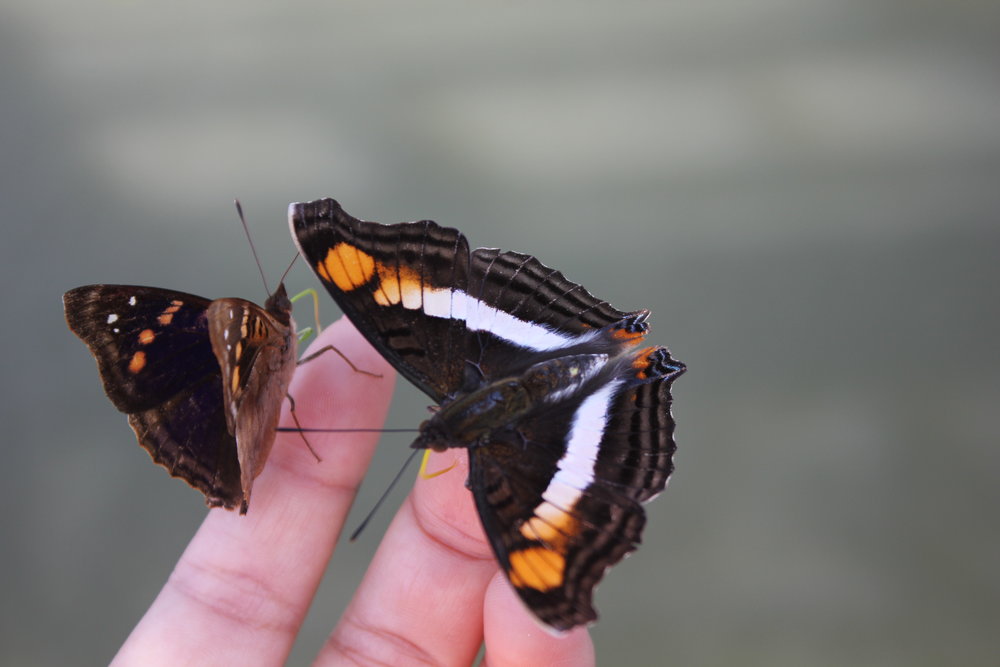
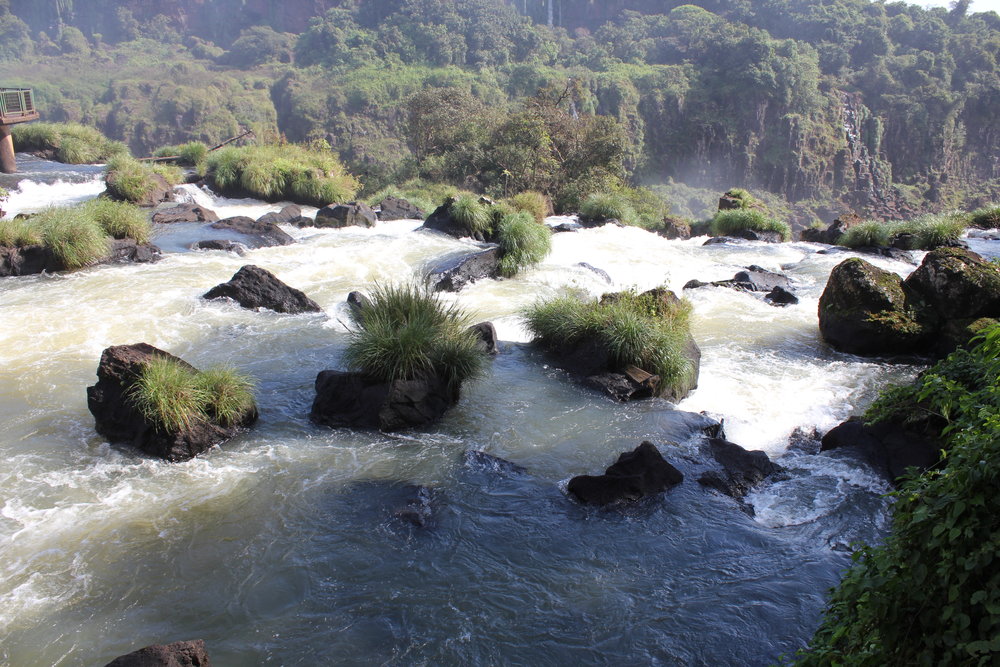
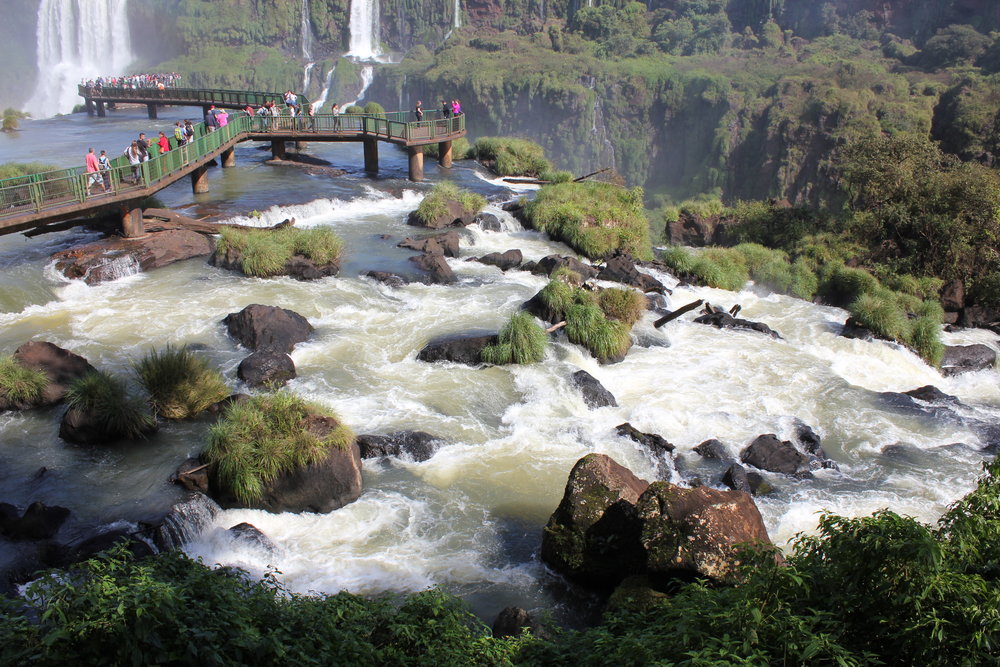
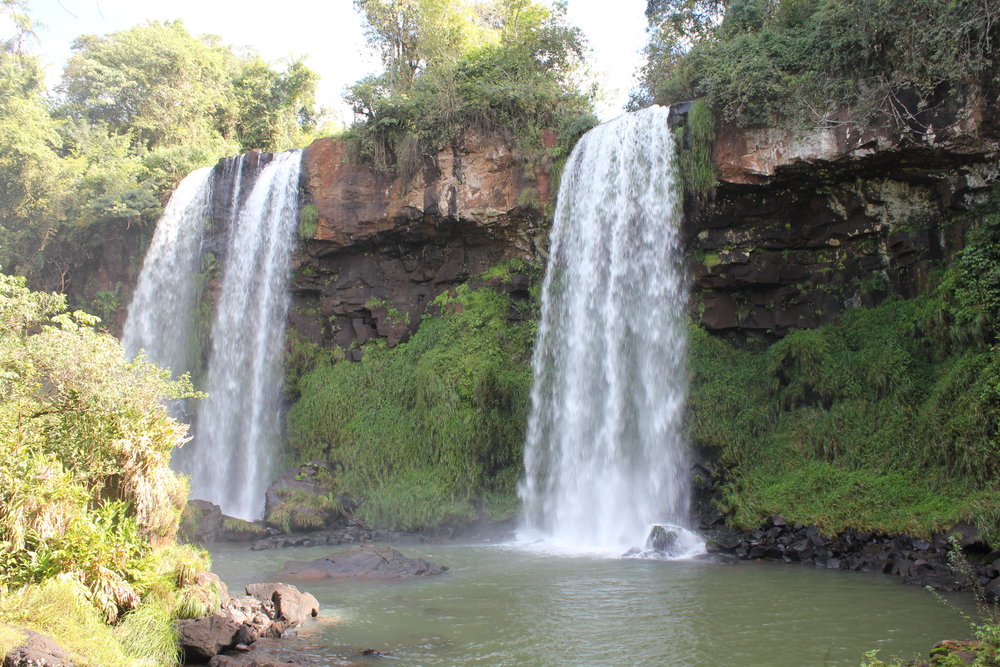
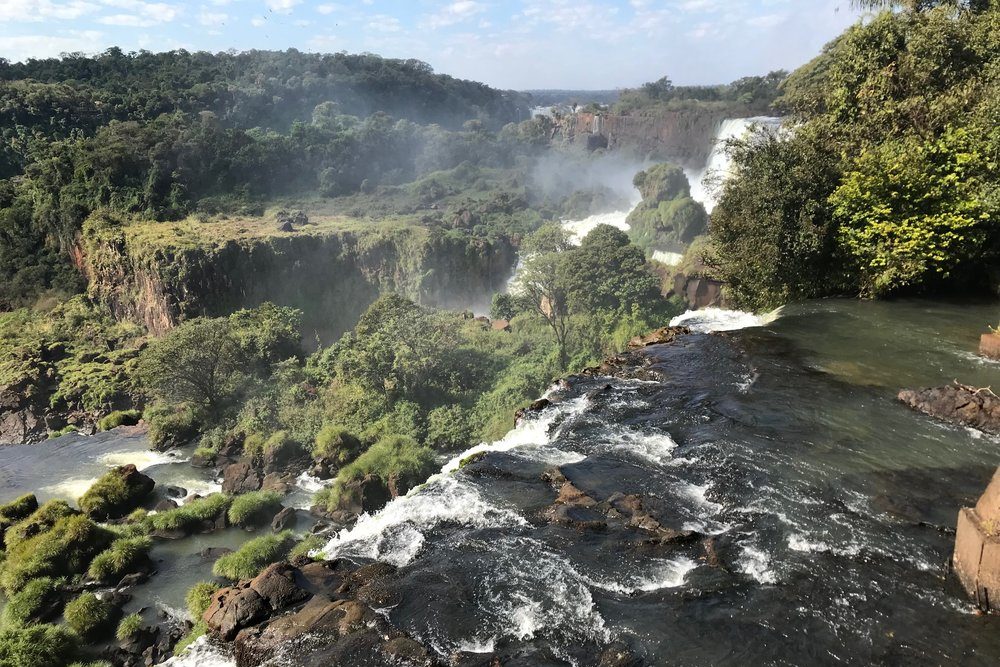
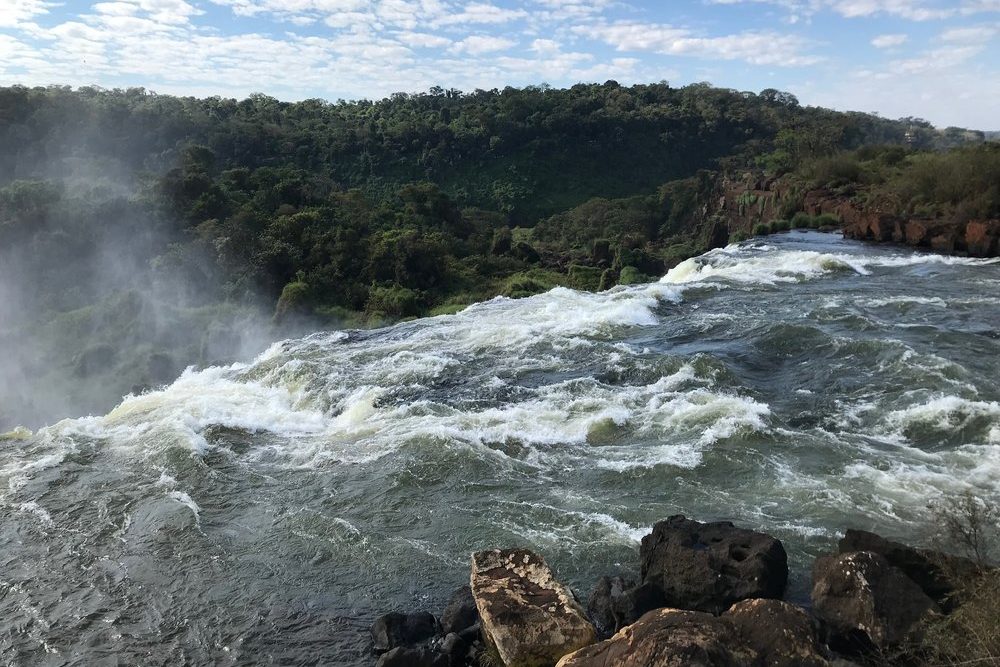
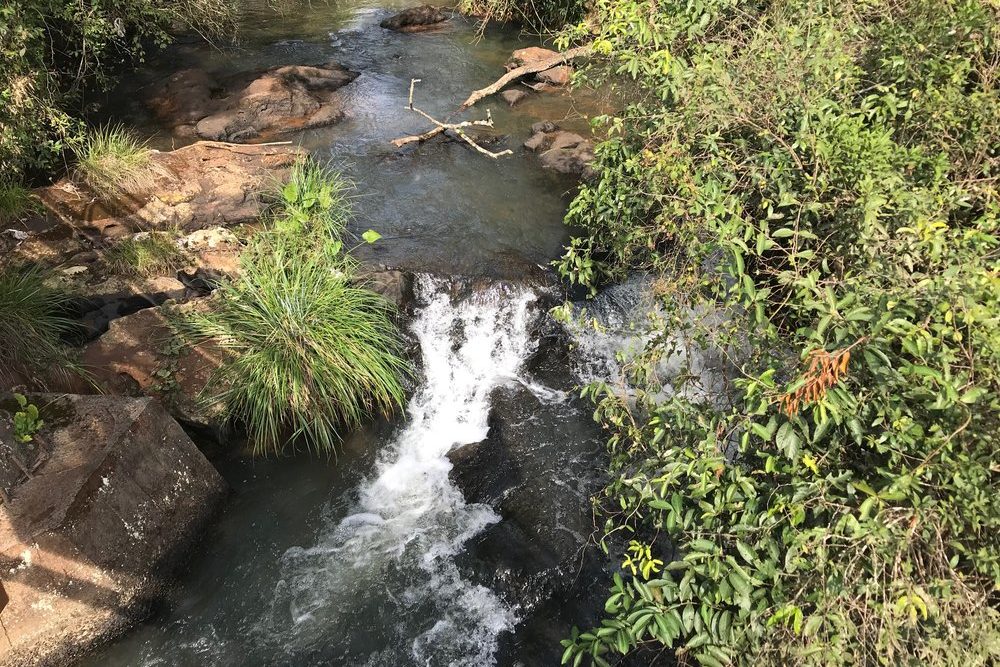










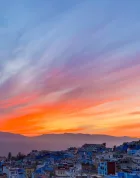


One place that I always wanted to go to, but not yet. That and Machu Pichu, Antartica, Brazil, and so on. Trying to decide if a guided tour would be best or not. Have to say, that’s the first time I’ve heard of the Cotis….. Great pictures
I don’t think you can go wrong with a guided tour, although planning your own cross-border adventures makes it a fun challenge as well. I’d highly recommend a visit and am itching to go back soon myself!
Ricky, I am always concerned with (human) crime in SA. How did you feel when in this area? Regional buses seem brave. What steps did you ake to protect yourself?
Never once did I feel unsafe. Foz do Igua√ßu gets plenty of tourists, so you should be okay as long as you keep your wits about you, keep an eye on your belongings, etc. If anything, it’s the coatis and monkeys you gotta watch out for!
Inspirational! I must go!